If you’re looking to achieve that enviable, sun-kissed glow year-round, investing in a home tanning bed can be an attractive option. But before you jump into a major purchase, there’s a lot to consider: from different bed types and lamp technologies to safety features and long-term maintenance. Buying a tanning bed is no small expense or responsibility, and you’ll want to ensure the bed you choose fits your goals, space, and budget. In this comprehensive guide, we’ll walk you through all the essentials to help you make an informed decision—so you can enjoy a consistently bronzed complexion in the comfort of your own home.
1. Understand Your Motivation and Goals
a) Convenience and Year-Round Tanning
A major reason people invest in tanning beds is convenience. Instead of driving to a salon, waiting for a free booth, and paying per session, you’ll have a tanning solution at your fingertips 24/7. Especially if you live in regions with long winters or limited sunlight, a personal tanning bed provides year-round access to a bronzed glow.
b) Control Over Tanning Environment
Home tanning beds offer a level of control that some find appealing. You can adjust session times, maintain the cleanliness of the bed, and ensure you know exactly who has used it. It’s a private, comfortable environment, allowing you to manage your tanning schedule without dealing with salon appointments or communal facilities.
c) Potential Cost Savings (Long-Term)
A single tanning session at a salon can cost anywhere from $5 to $20 or more. Over time, frequent tanning sessions can add up significantly. Although the initial outlay for a home tanning bed is substantial, if you’re a dedicated tanner, it may save you money long-term. The break-even point depends on your usage and the bed’s maintenance costs.
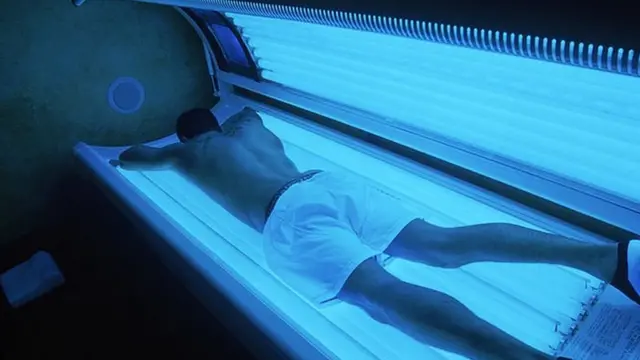
2. Types of Tanning Beds
Not all tanning beds are created equal. There are various designs, bulb configurations, and technologies to explore. Here are some of the most common types:
a) Traditional Horizontal (Lay-Down) Beds
These are the most recognizable tanning beds, featuring a hinged, clamshell design. You lie down inside, typically for about 10 to 20 minutes per session. Horizontal beds can come equipped with different bulb configurations that target your entire body evenly. Some include facial tanners or extra bulbs specifically designed for the face and upper body.
Pros:
- Familiar, salon-like design
- Often includes face and shoulder tanners
- Relaxing experience—many appreciate lying down
Cons:
- Takes up more floor space
- Requires periodic turning of your body if coverage isn’t uniform
b) Vertical Tanning Booths
Also called stand-up tanning beds or tanning booths, these are upright enclosures you step inside, using handles or rails to position yourself optimally under the bulbs. Sessions are typically shorter—around 5 to 15 minutes—due to higher-intensity bulbs.
Pros:
- Smaller footprint, good for tighter spaces
- Often more powerful bulbs that can provide faster results
- More hygienic for some users (you’re not lying where others have)
Cons:
- Not as relaxing for some, as you stand throughout the session
- Can be more expensive due to specialized high-intensity lamps
c) High-Pressure Tanning Beds
High-pressure tanning beds use lamps that emit more UVA than UVB rays. They can deliver faster tanning results and potentially require fewer sessions for a deep tan. However, they tend to be significantly more expensive, often found in upscale salons.
Pros:
- May achieve your desired skin tone in fewer sessions
- UVA-heavy bulbs result in a longer-lasting tan
- Less reddening or burning from UVB exposure (though still a risk if overused)
Cons:
- Higher cost and maintenance requirements
- Not as common in home settings unless you have a larger budget
3. Bulbs and Lamp Technologies
One of the most critical aspects of any tanning bed is the type and quality of its bulbs. The two primary types of UV rays involved in tanning are:
- UVA Rays: Penetrate deeper into the skin, responsible for the browning of pigment.
- UVB Rays: Promote the production of Vitamin D but can also be more responsible for sunburn if exposure is excessive.
a) Low-Pressure vs. High-Pressure Lamps
- Low-Pressure Lamps: These are the standard fluorescent-type tubes commonly seen in many salon and home tanning beds. They usually have a mix of UVA and UVB output. Replacement bulbs are more affordable.
- High-Pressure Lamps: Emit more UVA, found in specialized (often more expensive) tanning beds. They require less frequent replacement but cost more upfront.
b) Wattage and Bulb Count
Another factor to examine is the wattage of bulbs (e.g., 100W, 160W, etc.) and the total number of bulbs in the unit. Higher-wattage and more numerous bulbs can result in a faster, more intense tan—but also potentially higher operating costs and greater energy consumption.
c) Bulb Replacement and Compatibility
Tanning bulbs typically need replacement every 500 to 1,000 hours of use (sometimes more, depending on the type). If your tanning sessions last 10–15 minutes, you might not replace bulbs very often, but it’s crucial to understand your bed’s lamp lifespan and compatibility with replacement bulbs. Some manufacturers require you to purchase their proprietary lamps, which can be more expensive.
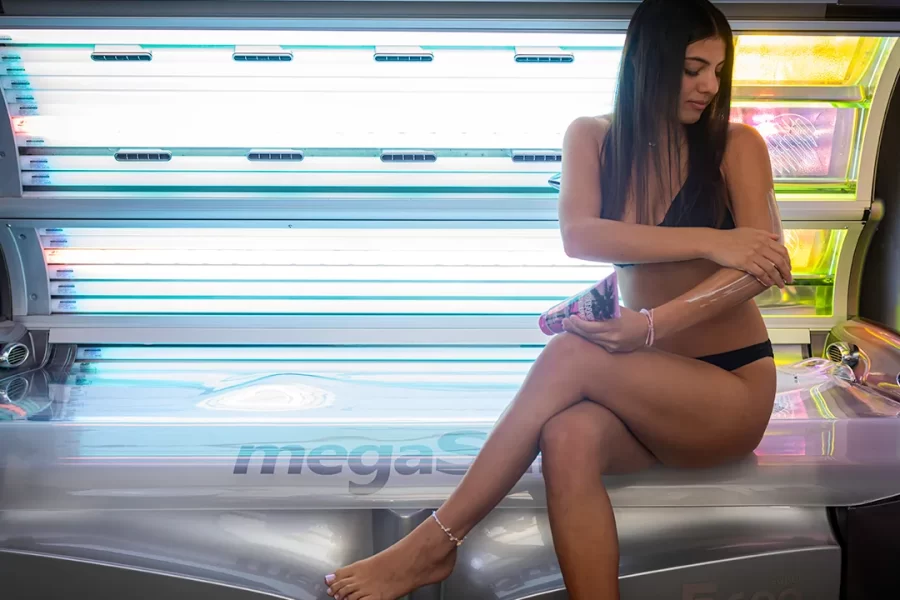
4. Safety Considerations
Any form of UV exposure carries risk, including photoaging (premature wrinkles, skin spots) and increased skin cancer risk. That said, if you decide to purchase a tanning bed, you should practice safety measures to reduce harm:
- Start Slowly: Build up your tan gradually. Limit early sessions to half the recommended time until you understand your skin’s sensitivity.
- Wear Protective Eyewear: UV rays can damage your eyes. Every reputable tanning bed should come with or recommend specialized goggles.
- Follow Manufacturer’s Guidelines: Tanning beds come with recommended session times based on their bulb intensity. Avoid exceeding these durations.
- Use Appropriate Lotions: Indoor tanning lotions can help moisturize your skin and enhance tanning results. However, skip any lotions not specifically formulated for indoor tanning as they might damage the acrylic or interact poorly with the bulbs.
- Stay Hydrated: UV exposure can be dehydrating. Drink plenty of water before and after your session.
While these measures won’t eliminate all risks, they can mitigate potential damage and ensure a safer tanning routine.
5. Space Requirements and Installation
Before you finalize a purchase, confirm that you have sufficient space in your home for a tanning bed or stand-up booth. Consider:
a) Dimensions and Layout
Lay-down beds are generally longer than stand-up models. For a horizontal bed, you’ll need both the floor space to accommodate the bed’s length and clearance for the lid to open. Stand-up booths often have a smaller footprint on the floor but can be tall, requiring adequate ceiling height.
b) Room Ventilation and Temperature Control
Tanning beds generate heat and often come with built-in fans or cooling systems. Ensure your chosen room has good ventilation so the space doesn’t get overly hot or stuffy. Some owners opt to place their bed in a basement or dedicated tanning room with an exhaust fan or open windows.
c) Electrical Requirements
Tanning beds can draw substantial power. Some smaller, residential-grade units only require a standard 120V outlet, but many higher-output or commercial-grade beds need 240V with dedicated circuits. Check the bed’s electrical specifications and, if necessary, consult an electrician to safely install a suitable outlet or circuit breaker.
6. Features and Accessories
If you’re comparing different brands or models, pay attention to extra features that may enhance comfort, safety, or convenience:
- Facial Tanner: Additional high-intensity bulbs or specialized facial reflectors to ensure even tanning for the face and upper torso.
- Shoulder Tanners: Extra bulbs targeting the shoulders—an area often missed in standard tanning.
- Cooling Fans or Air Conditioning: Built-in fans can keep you cool while you tan. Some high-end models have integrated air conditioning.
- Stereo Systems or Bluetooth: Many modern tanning beds come with built-in speakers, letting you listen to music or podcasts during a session.
- Digital Control Panels: Simple touchscreen interfaces or digital timers allow you to set session length, control fan speeds, or manage other functions.
- Acrylic Quality: The clear acrylic sheet you lie on or stand against is a crucial component. Higher-quality acrylic can maintain UV transmission better over time.
- Safety Timers and Automatic Shut-Off: Mandatory in many regions, these timers ensure the bed turns off automatically after a set period.
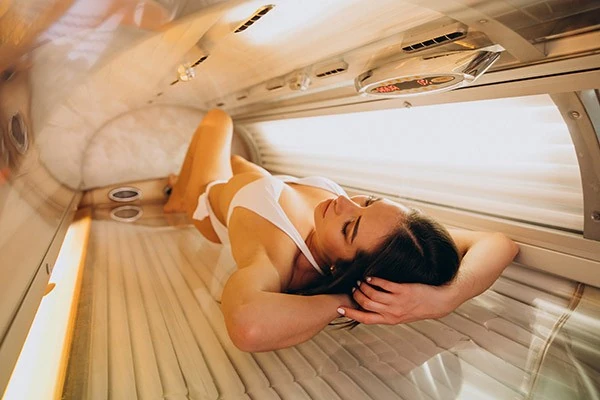
7. New vs. Used Tanning Beds
A brand-new tanning bed can be expensive, typically ranging from $1,000 to over $10,000 for commercial-grade units. If you have a tighter budget, you might consider a used tanning bed. While this option can save thousands of dollars, it comes with additional considerations:
- Check Bulb Usage: Find out how many hours the lamps have been used and whether they’re near the end of their lifespan. You may need to budget for immediate replacements.
- Overall Condition: Inspect the acrylic for cracks, scratches, or any signs of discoloration. Ensure the electronics and fans function properly.
- Manufacturer Support: If the model is outdated, you may have trouble finding replacement parts or bulbs. Research whether the brand still provides service or parts for that model.
- Electrical Requirements: Confirm that you can safely install the bed in your home. Even a used bed may require 240V or other special wiring.
- Warranty: Most used tanning beds won’t come with a manufacturer’s warranty, leaving you responsible for all repairs.
8. Maintenance and Upkeep
Owning a tanning bed isn’t just a one-time expense; you’ll also need to maintain it properly to ensure consistent performance and cleanliness.
a) Cleaning and Sanitizing
Regular cleaning after each use is vital—particularly if multiple people are using the bed. Use approved cleaners that won’t damage the acrylic. Thoroughly wipe down the bed’s surface, handles, and any high-touch points. This prevents the buildup of oils, sweat, or lotions, which can degrade the acrylic over time.
b) Bulb Replacement
As mentioned earlier, tanning lamps lose effectiveness over time. Even before a bulb fully burns out, its UV output may diminish by up to 30–40%. If you notice longer times required to achieve the same tan, it may be time for a bulb change. Follow the manufacturer’s guidelines for when and how to replace the lamps, and consider replacing all bulbs at once for consistent coverage.
c) Acrylic Care and Replacement
Over time, the acrylic in contact with the user can become scratched, discolored, or develop small cracks. Minor wear might not drastically affect tanning performance, but deeper damage can reduce UV transmission or create safety hazards. Periodically inspect the acrylic and replace it if you notice significant wear.
d) Ventilation and Cooling Systems
Fans and cooling systems within the tanning bed can accumulate dust and debris. Clean or replace air filters as recommended by the manufacturer to prevent overheating. Good airflow not only preserves the bed’s performance but also ensures a more comfortable session.
9. Regulatory and Health Considerations
Laws and regulations around tanning beds vary by country and region. Some places restrict tanning bed ownership or usage under certain ages (commonly 18 or 21). If you plan to share the tanning bed with friends, family, or a small business clientele, you may need to comply with additional codes or inspection rules—particularly if you’re charging people for sessions.
Additionally, it’s wise to remain informed about potential skin health risks. Overuse of tanning beds can lead to serious health issues. If you have a history of skin cancer, extremely fair skin, or other risk factors, consult a medical professional before regular UV tanning.
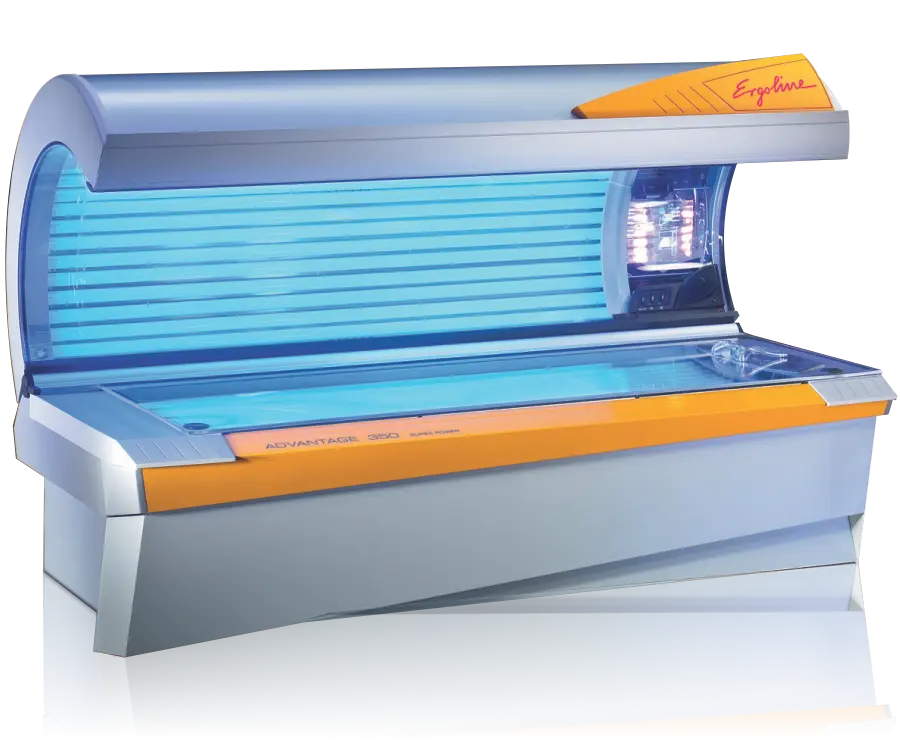
10. Setting a Realistic Budget
Beyond the initial purchase price, factor in recurring costs:
- Bulbs: Depending on how often you tan, you may need replacements every 1–2 years (or more frequently for commercial-grade usage).
- Electricity: High-wattage beds can increase your utility bill, especially if multiple household members use it frequently.
- Maintenance and Repairs: Aging fans, cracked acrylic, or malfunctioning control panels can require repairs.
- Accessories: Tanning lotions, goggles, or specialized bulbs.
By preparing for these ongoing expenses, you can avoid surprises and ensure that owning a tanning bed remains financially sustainable.
11. Comparing Brands and Reading Reviews
As you narrow down your options, research several manufacturers that have good reputations. A few well-known brands (depending on your region) include Ergoline, Wolff, Sunfire, Solar Storm, and SunVision, among others. Look for:
- Online Reviews and Forums: See if there are consistent complaints about a particular model’s durability, parts availability, or performance.
- Warranty Coverage: Some brands offer extended warranties covering parts and labor, which can be a valuable safeguard.
- Customer Support: A company that’s easy to reach for troubleshooting or part orders can save you a lot of frustration in the long run.
- Resale Value: Should you decide to upgrade or no longer need a tanning bed, certain brands hold their value better on the used market.
12. Delivery, Assembly, and Placement
Once you’ve made your choice, think about how you’ll get the bed delivered and installed:
- Delivery Logistics: Some tanning beds are large and heavy, requiring professional delivery and installation. Verify that the company offers white-glove delivery, especially if you have narrow hallways or tricky staircases.
- Assembly: Some units come fully assembled; others require partial setup, like attaching bulbs, acrylic panels, or canopy arms. Ensure you read the instructions carefully or hire a professional if needed.
- Placement: Install your bed in a dry space with plenty of room for ventilation. Check for easily accessible electrical outlets that match the bed’s voltage requirements. A separate circuit breaker is often recommended or required.
13. Maximize Your Tanning Experience
Purchasing a tanning bed is a significant investment, so make the most of it:
a) Follow a Tanning Schedule
Work out a schedule that allows your skin enough recovery time between sessions—usually at least 48 hours. Overexposure can lead to burns and long-term damage. A well-planned schedule also extends bulb life and reduces electricity usage.
b) Use Proper Skincare
Applying moisturizer or tanning lotion before, during, and after sessions can enhance results and keep skin healthy. Look for lotions formulated for indoor tanning, as standard lotions may impede UV penetration and could damage the acrylic surface.
c) Monitor Skin Changes
Keep an eye on your skin. If you notice any unusual moles, changes in freckles, or suspicious growths, consult a dermatologist immediately. Early detection and prevention are vital.
d) Combine with Other Tanning Methods
If you don’t want to rely solely on UV tanning, consider complementing it with sunless self-tanners, bronzing lotions, or spray tans. This allows you to maintain a consistent look without overusing your bed.
14. Weighing the Pros and Cons
Before you finalize your purchase, it’s wise to revisit the broader pros and cons:
Pros:
- Convenience of tanning at home
- Potential long-term cost savings if you tan frequently
- Personal control over hygiene, scheduling, and environment
Cons:
- High initial cost (plus maintenance, repairs, and electricity)
- UV exposure risks (premature aging, skin cancer)
- Space and electrical requirements can be challenging
Your decision ultimately hinges on how much you value the convenience and aesthetic benefits against the financial outlay and potential health trade-offs.
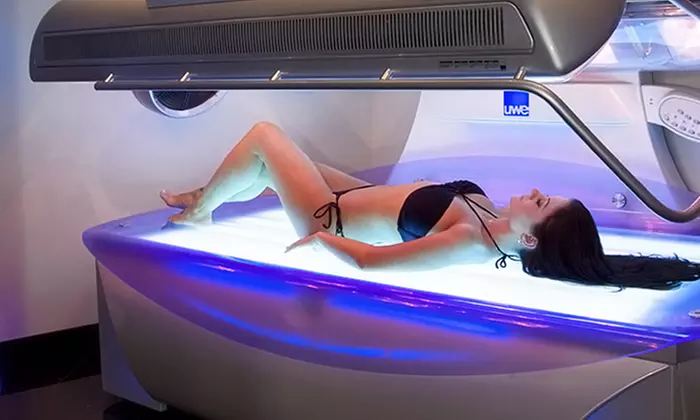
15. Conclusion
Buying a tanning bed is a major undertaking—but for many who crave a beautiful, sun-kissed glow regardless of season, it’s an appealing investment. The key is to approach the purchase with the right knowledge and clear expectations. Start by defining your tanning goals, then explore the different bed types and lamp technologies. Make sure you have the right space and electrical setup, and don’t forget essential maintenance steps like bulb replacement and acrylic care.
It’s equally critical to keep health and safety at the forefront—use protective eyewear, follow recommended exposure times, and stay vigilant about skin health. With thoughtful planning and responsible usage, a home tanning bed can deliver the comfort, convenience, and year-round tan you’re looking for.
Ultimately, the best tanning bed is one that fits seamlessly into your lifestyle, budget, and home environment. By understanding what’s involved—from comparing brands and reading reviews to ensuring you follow safe tanning practices—you’re well on your way to making a confident, informed decision. Whether you choose a horizontal bed, stand-up booth, or a high-pressure model, you can look forward to a sun-kissed sheen whenever you want—without ever leaving your doorstep.
